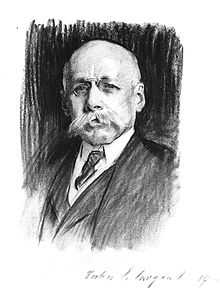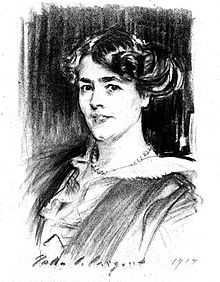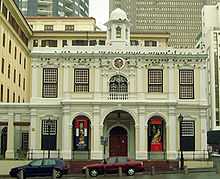Max Michaelis


Sir Maximilian Michaelis (11 May 1852 Eisfeld, Germany – 26 January 1932, Zurich) was a South African financier, mining magnate, benefactor and patron of the arts.
Michaelis received his early schooling in Nuremberg where he is said to have developed his love of old masters.
His first arrival in South Africa dates back to 1876 when he landed at Port Elizabeth. Two years later he had moved to Kimberley, drawn by the 1871 discovery of diamonds and the prospect of wealth. Here he became a close business associate of Julius Wernher and Alfred Beit and got to know Hermann Eckstein and Jim B. Taylor - friendships that were to last a lifetime. He was co-opted by Wernher to deal in diamonds for Porges and Wernher, and in the 1880s restructured the Cape Diamond Company. He was a founding partner of Wernher, Beit & Co. Within some years he had become manager of the Central Mining and Investment Corporation in Johannesburg. From 1896 he worked at the Corporation's offices in London and remained there until 1919, when he returned to South Africa. In England he led an extremely secluded life on the country estate, Tandridge Court in Surrey. Unlike the other Randlords, he was not given to lavish entertaining and spending, avoided the press, did not have an opulent London mansion and despite desiring a baronetcy, was not socially ambitious. With the outbreak of World War I and the anti-German hysteria that gripped England, Michaelis acted on a suggestion by General Smuts that he return to South Africa.
Max Michaelis and his wife arrived in Cape Town in 1919. In December of that year a grand civic reception for 2 000 guests was given in his honour.
In 1913 he had presented a collection of Dutch and Flemish old masters to the Union government, a gift leading to his being knighted. These formed the basis of the Michaelis Collection and were housed in the Old Town House in Cape Town. The decision to house the collection in Cape Town, came in for a great deal of criticism - public sentiment at the time was that the money had originated from the Reef gold mines and that the collection belonged in Johannesburg. Besides, a lot of the works were regarded as being of indifferent quality (Portrait of a Woman by Frans Hals being the cynosure of the collection) and there was at least one painting of questionable attribution. These works had been collected by Lady Phillips (wife of Sir Lionel Phillips, Bt) and Sir Hugh Lane. In June 1920 at the urging of Lady Phillips, he endowed the chair of Fine Art at the University of Cape Town and in return was rewarded with an honorary LL.D. He also donated a large number of art works to museums in Kimberley and Johannesburg.[1] In 1924 a knighthood was conferred on Max Michaelis. He died of cancer in Zurich in 1932.

Lady Michaelis, who returned to England on the death of Max Michaelis, presented large collections of art to the National Art Gallery in Cape Town and to Pretoria, with further gifts to the Michaelis Collection in Cape Town. She was also the founder of the Lady Michaelis Orthopaedic Home in Cape Town. Moses Kottler created a bronze bust of Sir Max, which was placed in the garden of the Old Town House in Cape Town.
In 1920, Max Michaelis acquired the Montebello estate in Newlands. Before his death in 1996, his son Cecil Michaelis, the artist, resenting government expropriation of the estate, donated Montebello to the University of Cape Town on condition the estate was used to promote design - this is now known as the Montebello Design Centre and the old residence as Michaelis House, the junior boarding house of the South African College Schools.
Gallery
-

Old Town House, Cape Town in 1878 -

Portrait of a Woman by Frans Hals -

Lady Michaelis by Edward Roworth
Notes
External links
|